2024 June Prize Spotlight
Congratulations to the following 2024 prize recipients who will be recognized at the 2024 SIAM Conference on Mathematics of Planet Earth (MPE24), the 2024 SIAM Conference on Nonlinear Waves and Coherent Structures (NWCS24), and the 2024 SIAM Conference on the Life Sciences (LS24).
- Katherine Evans – SIAM Activity Group on Mathematics of Planet Earth Prize
- Athanassios (Thanasis) Fokas – Martin Kruskal Lecture
- Adrianne Jenner – SIAM Activity Group on Life Sciences Early Career Prize
- David J.B. Lloyd – T. Brooke Benjamin Prize
- Johannes Lohmann – SIAM Activity Group on Mathematics of Planet Earth Early Career Prize
Katherine Evans
Katherine J. Evans, Oak Ridge National Laboratory, is the 2024 recipient of the SIAM Activity Group on Mathematics of Planet Earth Prize. She received the prize for her far-reaching impacts of multidisciplinary algorithms and scientific computing, leadership in multidisciplinary team building, and excellent science communication between disciplines.
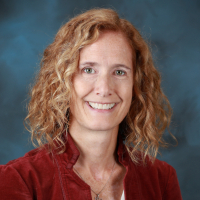
She will be recognized at the 2024 SIAM Conference on Mathematics of Planet Earth (MPE24), taking place June 10 -12, 2024, in Portland, Oregon, U.S. She will present a talk titled “A Circuitous Journey of Computational Science around the Earth” on Wednesday, June 12 at 1:30 p.m. PDT.
The SIAM Activity Group on Mathematics of Planet Earth awards this prize every two years to one individual for significant scientific work in topic areas that are relevant to the mathematics of planet earth or for sustained or seminal contributions to the scientific agenda of the SIAM Activity Group on Mathematics of Planet Earth.
Dr. Katherine Evans is the Director for the Computational Sciences and Engineering Division at Oak Ridge National Laboratory (ORNL), which covers scalable computing to address large scientific challenges across the physical, engineering, health, and quantum information sciences. Dr. Evans is also an active researcher in the areas of Earth system model evaluation, developing and implementing scalable numerical algorithms to improve the efficiency and accuracy of weather and climate models, and analysis of large-scale persistent weather patterns in global atmospheric models. As part of her numerical methods research, she also makes connections to other applications, including ice sheets, more general fluid flow, disease propagation, and oncology.
Dr. Evans earned her Ph.D. in earth and atmospheric sciences with an emphasis in math from the Georgia Institute of Technology (2000), where she was awarded the William Rhodes Fellowship and the Senior Dean’s Fellowship for most outstanding senior Ph.D. student. She joined ORNL in 2007 after a stint as a post-doctoral researcher and staff member at Los Alamos National Laboratory in the Decision Applications and Theoretical Divisions. She led the Computational Earth Sciences group at ORNL for 6 years before her current role. She is a member of the American Meteorological Society, American Geophysical Union, and SIAM. Learn more about Dr. Evans.
Q: Why are you excited to receive the award?
A: I am pleased to see more visibility of research around applied math and algorithms to improve and connect multiple disciplines of the Earth sciences. I am honored to be recognized as a part of this community.
Q: Could you tell us about the research that won you the award?
A: I am gratified to see that the committee resonated with the team aspect of my science. My work was in connecting and collaborating with other excellent researchers who share the same passion for enabling global scale Earth system models to leverage the power of high-performance computing while also including more complex and realistic physics. As one example funded by the DOE's Scientific Discovery through Advanced Computing program, which is designed specifically to connect mathematicians with domain scientists, I worked with a multi-institutional group to expand a serial, continental ice sheet model and rewrite the code to enable it to run on the largest supercomputer—which was the ORNL's multi-petascale Titan system at the time –and validate it against very limited and only recently collected observational data. At that time, we were just beginning to explore how to use the single GPU configuration on each of Titan's nodes, and we realized we needed to create more extensive benchmark tests that could tell us if our results were implemented correctly. Available metrics were not able to characterize the results we were generating. This led to a new verification and validation test suite, LIVVkit, that made it easier for model developers to track progress and develop new algorithms with confidence.
Q: What does your work mean to the public?
A: Those of us who work to accelerate and evaluate simulations of Earth system are typically behind the scenes of the science news headlines about weather, climate, and other related topics. But I think that building confidence and quality of atmosphere, ocean, ice sheets, and other complex multi-scale models of Earth is a necessary and very interesting science area that paves the way for better predictions and decisions about how we humans interact with the Earth.
Q: What does being a member of SIAM mean to you?
A: SIAM is a great organization to meet with scientists that span a broad range of mathematics from pure theoreticians to very applied and more domain focused math-friendly scientists like myself. They provide an environment to create a diverse team to deliver big impact and broad science outcomes.
Interested in submitting a nomination for the SIAM Activity Group on Mathematics of Planet Earth Prize? Mark your calendar - the next call for nominations opens May 1, 2025.
Athanassios (Thanasis) Fokas
Athanassios (Thanasis) Fokas, University of Cambridge, has been selected to deliver the 2024 Martin Kruskal Lecture. He was selected for his contributions to the development of the inverse scattering transform, for his new method for boundary-value problems, and his work on the asymptotics of the Riemann zeta function.
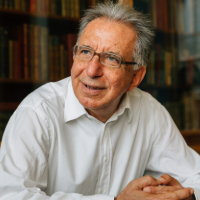
He will be recognized at the 2024 SIAM Conference on Nonlinear Waves and Coherent Structures (NWCS24), taking place June 24-27, 2024, in Baltimore, Maryland, U.S. He will deliver the lecture virtually on Wednesday, June 26 at 5:00 p.m. EDT.
The SIAM Activity Group on Nonlinear Waves and Coherent Structures awards this prize every two years to one individual for a notable body of mathematics and contributions in the field of nonlinear waves and coherent structures. The award may be given either for a single notable achievement or for a collection of such achievements.
Dr. Thanasis Fokas has a B.S. in aeronautics from Imperial College (1975), a Ph.D. in applied mathematics from the California Institute of Technology (1979), and an M.D. from the University of Miami (1986). He also has eight honorary degrees. He was appointed a Saul Kaplun Fellow in the Department of Applied Mathematics at the California Institute of Technology (1978). Dr. Fokas was professor and Chairman of the Department of Mathematics and Computer Science of Clarkson University (1985-93). In 1995, he was appointed to Chair in applied mathematics at Imperial College, and in 2002, he became the first holder of the inaugural Chair of Nonlinear Mathematical Science in the Department of Applied Mathematics and Theoretical Physics at the University of Cambridge. Since 2015, he has been an adjunct professor at the Viterbi School of Engineering at the University of South California and has held visiting positions at Stanford University and Harvard University.
Dr. Fokas is a member of the Academy of Athens and of the three major European Academies, including Academia Europaea. He is a Fellow of the Guggenheim Foundation, of the American Institute for Medical and Biological Engineering, and of the American Mathematical Society. He was awarded the Naylor Prize of the London Mathematical Society (2000), previously awarded to Stephen Hawking, and the Blaise Pascal Medal of the European Academy of Sciences (2023). He has been awarded the Excellence Prize of the Academy of Athens and the Aristeion Prize of the Bodossaki Foundation. He has been decorated with the Order of Phoenix by the President of the Hellenic Republic. In 2015, he was awarded a Senior EPSRC Fellowship which allowed him to concentrate on his research without any teaching and administrative responsibilities for six years. He introduced the ‘Fokas Method’ and has published in a remarkably broad range of topics in mathematics, physics, engineering, biology, medicine, philosophy, and the arts. Learn more about Dr. Fokas.
Q: Why are you excited to receive the award?
A: Because of my close relationship with Martin Kruskal, this award had a special emotional value for me. It also an honor to be awarded what is considered the most prestigious award in the area of nonlinearity.
Q: Could you tell us about the research that won you the award?
A: I have made important contributions in the central area of integrable systems, namely in integrable nonlinear evolution PDEs. This is precisely the research area that was initiated with the seminal work of Marin Kruskal. Jointly with colleagues, we have solved the key open problems in this area, namely: (i) constructed a bi-Hamiltonian formulation in 2+1 as opposed to 1+1, i.e., for integrable evolution PDEs in two as opposed to one spatial dimensions; (ii) extended the famous inverse scattering transform method from 1+1 to 2+1; (iii) introduced a novel method for solving initial-boundary value problems as opposed to the much simpler initial value problems; (iv) solved the x-periodic problem for arbitrary initial conditions as opposed to the special initial conditions that support the famous finite gap solutions; (v) and constructed and solved integrable nonlinear evolution PDEs in 3+1. The last two problems, which had remained open since the early 1970s, were solved in the last couple of years.
The result of (iii) had unexpected implications far beyond the area of integrability: it gave rise to the emergence of a completely new method in mathematical physics and beyond. This transform method, which is referred to as the unified transform or the Fokas method, has the novelty that, in contrast to the classical transforms, it is based on the synthesis as opposed to separation of variables. It constructs the solution of a plethora of physically significant problems that apparently cannot be solved by standard methods. This perhaps justifies the statement made in the citation for the Pascal Medal: “this [method] is the most important development in the solution of PDEs since Fourier, Laplace, and Cauchy.”
Together with colleagues, we have contributed decisively to the further development of asymptotic techniques and applied them in diverse areas, including: (i) the computation of a certain double asymptotic limits of the classical Painleve ODEs; (ii) the asymptotic evaluation of the Riemann zeta function and generalizations; (iii) and the analysis of the ultra-relativistic limit, i.e., the limit when the speed of particles tend to the speed of light, of the two-body problem in general relativity in the so-called post-Minkowskian approximation.
My medical background has facilitated my interaction with physicians and has helped me make significant contributions to nuclear imaging (PET, SPECT) and to electro-magnetoencephalography (MEG, EEG).
Q: What does your work mean to the public?
A: My choice of problems is based on significance and aesthetics. Although most of the problems I have solved have mathematical significance, some of my work has had direct applications, including my work on medical imaging and on the modelling of chronic myelogenous leukemia. My book, Ways in Comprehending, provides an interdisciplinary, integrative approach to knowledge and establishes that different disciplines and notions which appear disconnected, are actually, closely related. Furthermore, this approach elucidates how we think about topics such as mathematics, physics, painting, music, and philosophy. More importantly, it helps us understand the origin of our thoughts, feelings, and actions. This finally brings deep insight and fulfilment or, more precisely, eudemonia.
Interested in submitting a nomination for the Martin Kruskal Lecture? Mark your calendar - the next call for nominations opens May 1, 2025.
Adrianne Jenner
Adrianne Jenner, Queensland University of Technology, is the 2024 recipient of the SIAM Activity Group on Life Sciences Early Career Prize. She received the prize for her groundbreaking work in mathematical immunology. In particular, she and her collaborators identified previously-unknown molecular biomarkers that predispose individuals to severe COVID-19.
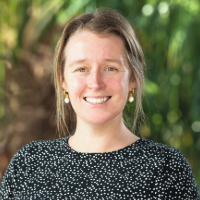
She will be recognized at the 2024 SIAM Conference on the Life Sciences (LS24), taking place June 10 -13, 2024, in Portland, Oregon, U.S. She will present a talk titled “COVID-19: Why Do Some Get Sick, and Some Feel Fine?” on Thursday, June 13 at 1:45 p.m. PDT.
The SIAM Activity Group on Life Sciences awards this prize every two years to one individual in their early career, in the field of mathematics applied to the life sciences, for distinguished contributions to the field in the three calendar years prior to the award year.
Dr. Adrianne Jenner completed a Bachelor of mathematics at the University of Wollongong, Australia (2013) before entering a Ph.D. at the University of Sydney, Australia. She completed her Ph.D. in 2019 in applied mathematics where her thesis investigated modelling the treatment of cancer using immunotherapy and virotherapy. She was awarded the bourse de formation postdoctoral (2019), a postdoctoral fellowship from the Quebec Health Research fund, to work at the University of Montreal, Canada, under the supervisor of Dr. Morgan Craig.
Dr. Jenner is now a Senior Lecturer in the School of Mathematical Sciences at Queensland University of Technology, Australia, where she has been since 2021. Her research focuses on the development of stochastic and deterministic models of the immune response in diseases such as cancer, COVID-19, and multiple sclerosis. She was recently awarded an Australia Research Council Discovery Early Career Researcher Award to fund her research into the immune system in the central nervous system, and to help establish a foundation for mathematical neuroimmunology. Learn more about Dr. Jenner.
Q: Why are you excited to receive the award?
A: I am very honored to have received this award for my research. As an early career researcher, it means so much to have my research recognized by the SIAM community. It is so easy when you are junior to wonder if your research is making an impact and this award helps to recognize the impact my research has had up until this point. It is incredibly humbling to join the other award winners and I hope I can use this award as an opportunity to promote mathematics, and particularly mathematics in the life sciences, to other junior researchers and encourage them to follow their passions.
Q: Could you tell us about the research that won you the award?
A: The SIAM Life Sciences Early Career Prize was awarded for my paper published in PLOS Pathogens investigating the cause of severe COVID-19 disease response. In this work, we developed a mathematical model capturing the way a human's immune system reacts to the presence of SARS-CoV-2—the COVID-19 causing virus. We calibrated the mathematical model to range of hospitalized data and created "virtual" human representatives. With these "virtual" patients, we then probed what drove them to have severe COVID-19 disease and found a particular biomarker was the likely cause. Our suggested biomarkers have since been validated by many others by examining hospitalized data.
Q: What does your work mean to the public?
A: As a mathematician in the life sciences, I strive to develop useful mathematical models that can improve our understanding of diseases such as cancer, COVID-19, and multiple sclerosis. I see my work as being a tool for developing hypotheses that can be tested by clinicians and experimentalists. Given the cost of doing new experiments and running clinical trials, I am to use my research to narrow down what avenues clinicians and experimentalists should take when examining novel therapeutics of investigating the cause of diseases.
Q: What does being a member of SIAM mean to you?
A: I feel it is very important to be a part of the SIAM community as it allows me to connect with many experts, not just in my area of the life sciences, but in other areas of mathematics. By networking with other mathematicians from different areas, I can expand the techniques I have to draw upon to tackle the problems I work on in the life sciences. It has been very important to me to be a part of the SIAM community to be able to learn from others from all over the world.
Interested in submitting a nomination for the SIAM Activity Group on Life Sciences Early Career Prize? Mark your calendar - the next call for nominations opens May 1, 2025.
David J.B. Lloyd
David J.B. Lloyd, University of Surrey, is the 2024 recipient of the T. Brooke Benjamin Prize. He received the prize for his advancement of the theory of multi-dimensional patterns, particularly his development of numerical methods for the construction of heteroclinic connections between patterns.
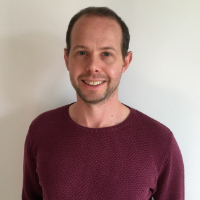
He will be recognized at the 2024 SIAM Conference on Nonlinear Waves and Coherent Structures (NWCS24), taking place June 24 - 27, 2024 in Baltimore, Maryland, U.S.
The SIAM Activity Group on Nonlinear Waves and Coherent Structures awards this prize every two years to one mid-career established researcher for recent outstanding work on a topic in nonlinear waves, as evidenced by a body of work with at least one significant publication in English in a peer-reviewed journal within the four calendar years preceding the award year.
Dr. David Lloyd earned both his undergraduate degree (2002) and Ph.D. (2006) at the University of Bristol. He then moved to University of Surrey in 2005 on a tenure track position and was promoted to full professor in 2021. Learn more about Dr. Lloyd.
Q: Why are you excited to receive the award?
A: T. Brooke Benjamin was Sedleian Professor of Natural Philosophy at Oxford from 1979-1995 and was my Ph.D. supervisor’s supervisor. It feels like a major honor to have my research linked to Brooke and his seminal contributions in nonlinear waves, while the prize highlights that the area is a vibrant, exciting, and active area of research with many interesting open problems still left to be explored.
Q: Could you tell us about the research that won you the award?
A: The prize is for an outstanding body of recent work as evidenced by at least one paper published in the last 4 years and the committee recommended my “advancement of the theory of multidimensional patterns, particularly my development of numerical methods for the construction of heteroclinic connections between patterns”. The mathematics for one-dimensional localized patterns is well-established, but as soon as the patterns become two- or three-dimensional both the mathematics and numerics get significantly more challenging, requiring new techniques to be developed.
The work that was specifically cited looks how one can compute heteroclinic connections between patterns, which is a highly challenging problem due to complicated boundary conditions. An example of these types of patterns are grain boundaries seen in a wooden tabletop where stipes of different orientations meet. My work addressed an open problem in the field about how one can use numerical parameter path-following methods to explore pattern invasion fronts outside the parameter regions where localized patterns are stationary. This work has opened a new area of research that is still very much unexplored.
Q: What does your work mean to the public?
A: Localized patterns occur in everyday life from weather fronts that might bring rain, why crime hotspots might occur, to stop-and-go traffic jams on highways. Understanding why patterns localize in space and their behaviors, provide deep insights across a wide range of applications. My work focuses on developing both theoretical and numerical methods for understanding localized patterns that occur in two and three space dimensions.
Q: What does being a member of SIAM mean to you?
A: I’ve been a SIAM member for a long time now and I love how I feel part of a fun, vibrant, and inclusive community of applied mathematicians interested in tackling real-world challenges. Having a community to share ideas across boundaries and promote the importance of mathematics for all science, technology, and the humanities is what makes SIAM great.
Interested in submitting a nomination for the T. Brooke Benjamin Prize? Mark your calendar - the next call for nominations opens May 1, 2025.
Johannes Lohmann
Johannes Lohmann, Niels Bohr Institute, University of Copenhagen, is the 2024 recipient of the SIAM Activity Group on Mathematics of Planet Earth Early Career Prize. He received the prize for his exemplary work in developing objective statistics of time scales for rapid climate shifts, and in advancing tipping points for the AMOC. This is the first time that the prize is being awarded.
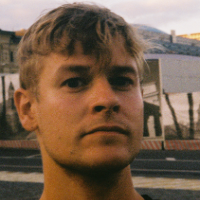
He will be recognized at the 2024 SIAM Conference on Mathematics of Planet Earth (MPE24), taking place June 10 -12, 2024, in Portland, Oregon, U.S. He will be recognized during the MPE24 Prize Session on June 12 at 1:30 p.m. PDT.
The SIAM Activity Group on Mathematics of Planet Earth awards this prize every two years to an outstanding early career researcher in the field of mathematics of planet earth for distinguished contributions to the field in the six calendar years prior to the award year.
Dr. Johannes Lohmann received his Ph.D. in physics from Copenhagen University (2018). He has been an assistant professor at Copenhagen University since 2021, performing research in non-linear dynamics and emergent phenomena in complex systems, with particular focus on critical transitions and abrupt changes in climate. Dr. Johannes’ interests include the study of climate predictability and tipping points by combining dynamical systems theory, physical modeling, analysis of observations, and laboratory experiments. He is an expert in paleoclimate dynamics and time series analysis, including statistics of extreme events such as volcanic eruptions. Additionally, he was a visiting assistant professor at the University of Tokyo (2023). He is currently a principal investigator for two projects funded by the Independent Research Fund Denmark and the Villum Foundation.
Q: Why are you excited to receive the award?
A: I am very honored to receive the SIAM Activity Group on Mathematics of Planet Earth Early Career Prize, and I am humbled to be recognized among the excellent young colleagues working in the interface of mathematics, dynamical systems, and climate science. For me, this is a great encouragement to continue my work on improving the foundations of our knowledge and uncertainties in regard to the climate crisis, and to advance to the next career stages.
Q: Could you tell us about the research that won you the award?
A: I investigated the possible occurrence of catastrophic, abrupt climate changes from two angles. First, I analyzed past abrupt climate changes observed in ice core records and identified their stochastic and deterministic components to assess whether these could occur spontaneously, or instead could be reliably anticipated. Second, by forward modeling, I investigated future tipping points with the notable example of a potential collapse of the Atlantic meridional overturning circulation. Here, a complex multistability of the ocean circulation under time-varying forcing was found, and the location of the tipping point and its predictability was found to depend on the rate of change of environmental conditions.
Q: What does your work mean to the public?
A: My work contributes to better quantifying the increasing concern of crossing tipping points in the Earth system, by giving a nuanced view on the risks and pathways of abrupt changes in the climate as a complex, non-equilibrium, high-dimensional chaotic system, and proposing potential ways forward towards early prediction of imminent transitions.
The public is increasingly aware of the potential future occurrence of such tipping points, but because of the long-time scales and uncertainties involved, it is hard for the public to judge the true risk. While there is demand for concrete answers at what levels of global warming tipping points will occur, my work highlights that such answers need to be given in a probabilistic form, because of fundamental limitations in predictability of complex systems.
Q: What does being a member of SIAM mean to you?
A: I cherish SIAM as a unique platform of interdisciplinary research, connecting mathematically inclined researchers from different disciplines. Attending the exceptional conferences organized by SIAM on a regular basis provides me with continuous inspiration for my research and pushes me outside my comfort zone by engaging in methods and approaches pioneered by researchers outside my own immediate community.
Interested in submitting a nomination for the SIAM Activity Group on Mathematics of Planet Earth Early Career Prize? Mark your calendar - the next call for nominations opens May 1, 2025.
Stay Up-to-Date with Email Alerts
Sign up for our monthly newsletter and emails about other topics of your choosing.



